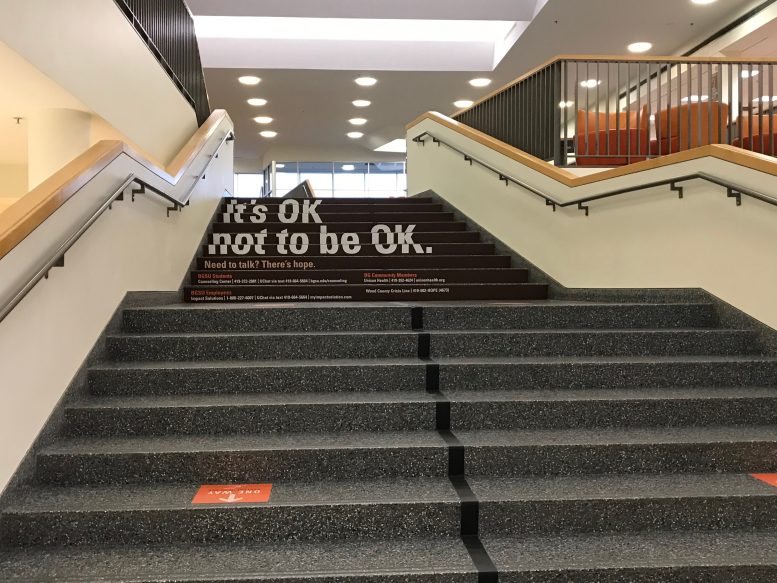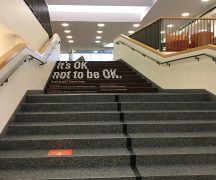By DAVID DUPONT
BG Independent News
In fall 2019, the BGSU counseling center was seeing record number of visits.
It was “packed with new appointments,” said Phil Hughes, a counselor and community intervention coordinator. This “was the highest volume we’ve ever seen.” COVID-19 was still waiting in the wings. “The pandemic just exacerbated it.”
Hughes and director of wellness Faith DeNardo and health educator Ashley Hartman have received a grant of $102,000 a year for three years from the federal Substance Abuse and Mental Health Administration to help address these mental health issues.
The money, Hughes said, will help the university increase its suicide prevention efforts. “My goal in in applying for this is to really bulk up those programs. “
The largest share of the funds, he said, will be used to establish a new peer-to-peer program that is modeled on the University of Michigan’s Wolverine Support Network.
“Clinicians and systems keep getting more and more strained, so we’re trying to fine unique and creative ways to reach students.”
Through the program students are trained in how to help their peers. They are provided with tools to use and guidance in how to handle crisis situations that are beyond their ken. While run by students, Hughes said, they are advised mental health professionals.
The plan, he said, is to roll the program out next fall. The groundwork is being laid.
Some of the SAMHSA funds will also be used to buttress the Question Persuade Refer program offered in conjunction with NAMI. That program trains people to recognize the warning signs of suicide, how to offer hope, and to know and how to find resources the client needs.
The Mental Health First Aid is similar in that it offers training in suicide prevention to faculty and staff.
There’s not one particular cause for this increased demand, Hughes said.
Incoming students, he said, “are very in tune with mental health.”
While seeking treatment for mental health concerns is still stigmatized, he said, there’s not such a stigma for them. “These students coming in talk openly about seeing a therapist.”
In a survey done at BGSU, 98 percent of students said they would not judge someone for seeking mental health treatment, and they are already aware of the services.
More students are arriving on campus who have already been diagnosed with a mental health disorder, usually anxiety and depression. “We are seeing more students who are medicated than a decade ago,” Hughes said.
All this is leading institutions of higher education nationwide to increase their mental health services.
“Administration, from the president on down, is making this an initiative on college campuses,” Hughes said.
They realize that they need to focus on mental health. “If students aren’t in a good place with their mental health, it’s not going to help retention,” he said.
That’s been true at BGSU as well.
“Our administration is extremely supportive in allowing us to be creative in how we tackle these issues” and with providing funding for these approaches, including hiring more personnel.
Colleges were already focused on students’ physical well-being, Hughes said. Now “let’s talk about the mental health piece as part of our well-being.”



